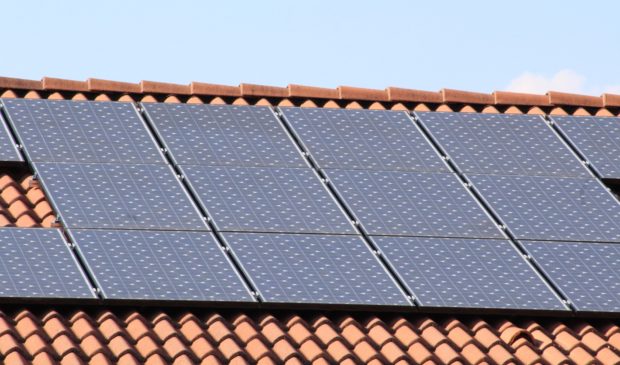Austin’s community solar program comes to light
Tuesday, March 6, 2018 by
Jessi Devenyns For years, people have lamented that although the sun shines at no cost, it is cost prohibitive to redirect its energy from the outdoors and into your home. Even if Austinites want to implement solar technology, they must contend with tree cover, roof maintenance issues and significant upfront costs.
Last year, to help alleviate some of the financial concerns from those who want to implement solar energy, City Council passed an ordinance that set a goal for Austin Energy to spend $500,000 in 2018 to help increase access to solar energy for underserved markets.
At the Feb. 28 meeting of the Austin Energy Utility Oversight Committee, Danielle Murray, the solar energy services manager for Austin Energy, announced that the utility was well on its way to meeting the prescribed goal.
For 13 years, Austin has used an incentive-based solar program to help drive down the cost of solar through rebates. Since 2004, $70 million has been given to 6,900 entities. Though the rebates were mainly allocated to single-family homes and business, the program worked, and now Austin makes up 4 percent of the Electric Reliability Council of Texas solar generation market.
Now, Austin is looking to phase out its tiered incentive program in favor of implementing a flat rebate of $2,000 to $2,500 and focusing its efforts on multifamily affordable housing, low-income residents, renters and nonprofits.
The use of community solar programs is the most innovative method that Austin Energy has dreamt up to offer these markets access to solar.
According to Debbie Kimberly, vice president of Customer Energy Solutions at Austin Energy, these programs, which produce solar energy locally, allow Austin to move a generation closer to the demand, which helps reduce overall costs.
Although this idea is not unique, according to Robert Cullick, the director of communications and marketing at Austin Energy, it is one of the few city-funded programs of its kind in the United States.
Residents who are interested in participating simply opt into the program at a premium price. Currently, electricity is 1.3 cents per kilowatt-hour more expensive than the regular power supply that comes off the ERCOT grid, but the rate is locked in for 15 years.
However, for Customer Assistance Program customers, there is a discounted rate that is marginally less than the rate for conventional electricity. “It’s very small, but that is also locked in for 15 years, so that could grow over time,” said Murray. “We think that’s going to be more equitable for our customers.”
The first community solar program came online in 2016 and is located on top of the Palmer Events Center. It currently provides 185 kilowatt-hours of rooftop solar to the community. Cullick told the Austin Monitor that “We sold Palmer in hours.” He explained that that initial success was the impetus for the creation of the second community solar plant, La Loma.
La Loma is located on the corner of Springdale Road and Airport Boulevard and was approved for construction by Council in December 2017. The project is expected to provide 400 residents with locally generated solar power.
Unlike the Palmer project, however, La Loma is earmarked to provide half its energy to CAP customers. Already, the 2.6-megawatt solar farm has a waiting list for non-CAP customers to sign up. The portion allocated to CAP customers is 15 percent subscribed.
Murray expects to have 100 percent of the generation spoken for by the end of March.
“It’s kind of just hitting in the street in the last few weeks,” Murray said. She noted that even the last week has seen a significant increase in sign-ups. However, “If by the end of March we don’t see that, we can extend two more weeks and see what happens,” she explained.
Cullick told the Monitor that providing community solar power is a win-win situation. He explained that it gives ready access to those who would otherwise be priced out of the market, and for those who can readily afford to participate, paying a premium price will pay off over time. According to him, “even at the unsubsidized price, it’s a pretty good deal.”
Council Member Ellen Troxclair was absent from this discussion.
The Austin Monitor’s work is made possible by donations from the community. Though our reporting covers donors from time to time, we are careful to keep business and editorial efforts separate while maintaining transparency. A complete list of donors is available here, and our code of ethics is explained here.
You're a community leader
And we’re honored you look to us for serious, in-depth news. You know a strong community needs local and dedicated watchdog reporting. We’re here for you and that won’t change. Now will you take the powerful next step and support our nonprofit news organization?








